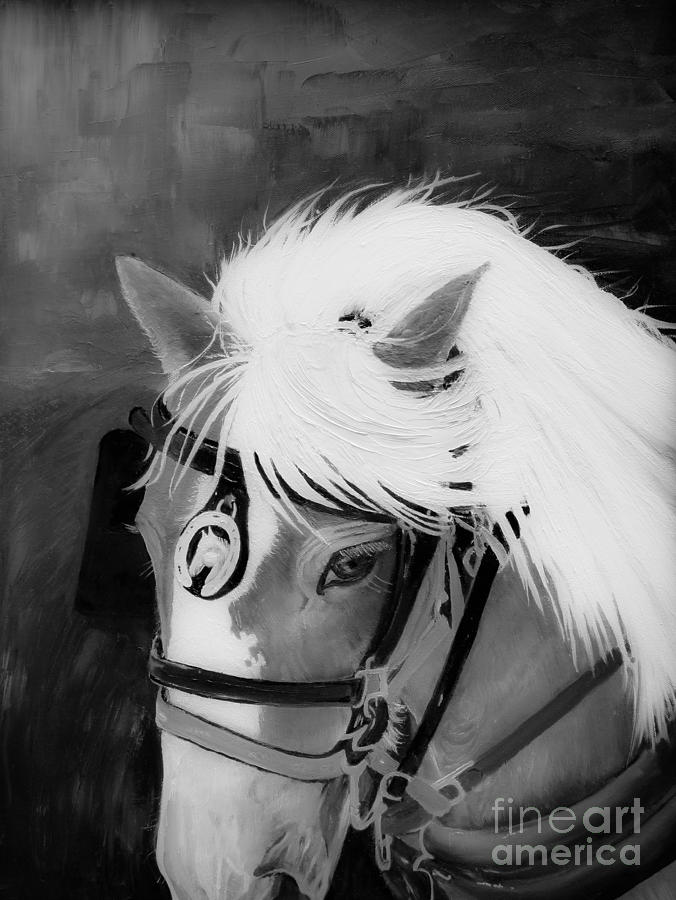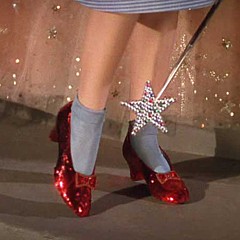
Amos- Black and White Horse - Adam's Rib

by Jan Dappen
Buy the Original Painting
Price
$650
Dimensions
18.000 x 24.000 inches
This original painting is currently for sale. At the present time, originals are not offered for sale through the Jan Dappen - Artist Website secure checkout system. Please contact the artist directly to inquire about purchasing this original.
Click here to contact the artist.
Title
Amos- Black and White Horse - Adam's Rib
Artist
Jan Dappen
Medium
Painting - Oil On Canvas
Description
Black and white Version of an original oil painting. The Original Oil Painting in Color is for sale by the owner. See Horses in my Galleries here on my site.Thank you for visiting.
Original Oil on 18 X 24 canvas. The original is for sale, contact the artist.
Many thanks to Renee and Randy Walker and family for sharing Renee's awesome photograph of their beautiful Haflinger Horse and allowing me to use the photo as a reference for my painting.
Meet Amos. His registered name is Adam's Rib. He is 15 years old. He was born on the Walker farm in Ohio and now is a pasture buddy for an old horse belonging to a friend of the Walker family. The medallion is just a harness decoration.. He was retired and a friend needed a buddy for her old horse so he is loaned out and enjoying his retirement.
Amos was showed in hitch classes, single cart thru 4 horse hitch. He also did a lot of obstacle and speed classes in the cart and team. He got hurt as a yearling and ended up with ugly scars on one hind leg so he didn't do well in line classes. Line classes are halter classes in the draft world. Renee's daughter showed a little in riding classes also. Renee was born into a family of horse lovers so she has had many breeds and sizes. However, the Haflngers are her favorite breed.
The Haflinger is a small, sturdy chestnut colored horse descended from the Tyrolean ponies of Austria and northern Italy. It is also known as the Avelignese. Though they are quite small, standing between 13 to 15 hands high, these horses are not ponies.
The exact origin of the Haflinger is unknown, but their heritage includes ponies from the Tyrolean mountains of Austria. All Haflingers trace their ancestry back to the foundation stallion, 249 Folie, born in 1874. Powerful and hardy, these hard-working horses were used by farmers for pulling, as pack horses, and for transportation. The name Haflinger comes from the village of Halfling, in a region that now belongs to Italy, where Folie was born.
With a heritage of tough hard-working horses, the Haflingers are strong and hardy. These attractive multi-talented horses are known for their longevity and excellent disposition. The Haflinger horse is very people oriented with a docile and friendly nature. Intelligent and sensible, they are quick learners and a 'jack of all trades'. They have a place in all disciplines though are not necessarily specialized in any. They are used for trail riding and endurance, as well as for therapeutic riding. They are successful in low to mid level dressage, jumping, and vaulting. This breed is also widely used in driving and for working and pulling farm equipment.
Until 1945 the Haflinger was primarily distributed in the region of the central Alps. It has since become a worldwide breed bred in more than sixty countries. The American Haflinger registry in Akron Ohio is one of 22 national registries making up a confederation overseen by the World Haflinger Federation. There are currently over 20,000 Haflingers registered in the U.S.
Haflingers range from pale chestnut to dark liver chestnut with a pale or flaxen mane and tail. Color impurities are undesirable. Leg markings are also undesirable; however moderate head markings are allowed and encouraged.
The desired size is from 54 to 60 inches, or 13.2 to 15 hands high. Haflingers should have a lean, elegant head with expressive eyes, a well formed neck, supple midsection, and a medium sized croup. The limbs should be well defined with good range of mobility in the joints. They should have the look of an all around athlete with a harmonious body structure.
The gaits should be clear and rhythmic. The walk should be a clear four beats, the trot two beats, and the canter three beats. Some knee action is desirable, and the trot and canter should show natural suspension with uphill balance.
He is a dependable trail or endurance horse and his cleverness and quickness also make him suited to many western discipline
Uploaded
May 14th, 2015
Statistics
Viewed 4,224 Times - Last Visitor from Seattle, WA on 04/24/2024 at 10:07 PM
Embed
Share
Sales Sheet
























































